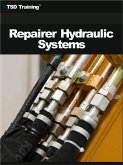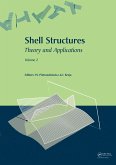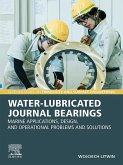Mechanical Design Engineering Handbook, Second Edition, is a straight-talking and forward-thinking reference covering the design, specification, selection, use and integration of the machine elements that are fundamental to a wide range of engineering applications. This updated edition includes new material on tolerancing, alternative approaches to design, and robotics, as well as references to the latest ISO and US engineering regulations. Sections cover bearings, shafts, gears, seals, belts and chains, clutches and brakes, springs, fasteners, pneumatics and hydraulics, amongst other core mechanical elements. This practical handbook is an ideal shelf reference for those working in mechanical design across a variety of industries.
In addition, it is also a valuable learning resource for advanced students undertaking engineering design modules and projects as part of broader mechanical, aerospace, automotive and manufacturing programs.
In addition, it is also a valuable learning resource for advanced students undertaking engineering design modules and projects as part of broader mechanical, aerospace, automotive and manufacturing programs.
- Presents a clear, concise text that explains key component technology, with step-by-step procedures, fully worked design scenarios, component images and cross-sectional line drawings
- Provides essential data, equations and interactive ancillaries, including calculation spreadsheets, to inform decision-making, design evaluation and incorporation of components into overall designs
- Includes procedures and methods that are covered to national and international standards where appropriate
- New to this edition: flow-charts to help select technology; Failure Mode Effects Analysis (FMEA), product, service and system design models, Functional Analysis Diagrams (FADs), Design for Excellence (DFX), Design for MADE, and the process of remanufacture
Dieser Download kann aus rechtlichen Gründen nur mit Rechnungsadresse in A, B, BG, CY, CZ, D, DK, EW, E, FIN, F, GR, HR, H, IRL, I, LT, L, LR, M, NL, PL, P, R, S, SLO, SK ausgeliefert werden.
"This practical handbook is an ideal shelf reference for those working in mechanical design across a variety of industries. It provides fundamental equations and understanding of commonly used machine element designs and provides many practical tips for a successful design. It would be a handy book to have if you do any sort of mechanical design work that inovlves the components listed in the book." --IEEE Electrical Insulation Magazine









